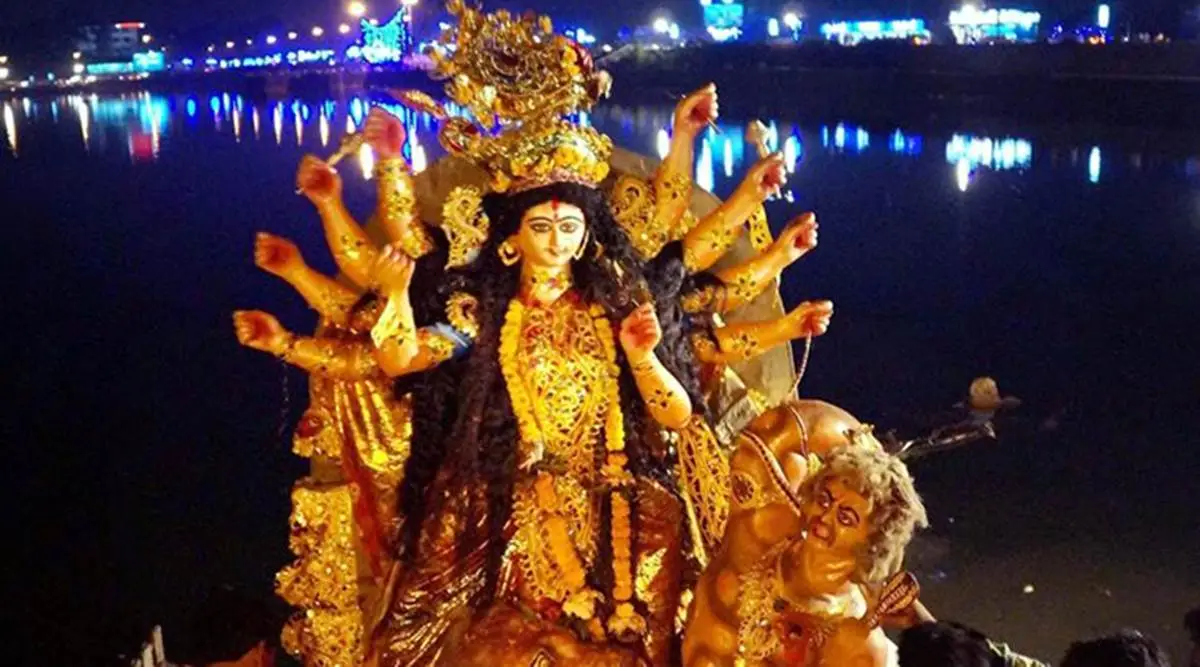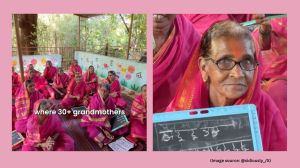Durga Puja Mahalaya Amavasya 2017: Know its history and significance
Mahalaya marks the end of the Pitri Paksha and beginning of the Devi Paksha. According to mythology, it is said that the goddess Durga was created with the blessings of all the other gods, especially Brahma, Vishnu and Mahesh, so as to defeat the demon king Mahishasura, who had received a boon that he could not be killed by any man or god.
 Mahalaya is known as the day Goddess Durga took birth and came to defeat the demon king Mahishasura. (Source: File Photo)
Mahalaya is known as the day Goddess Durga took birth and came to defeat the demon king Mahishasura. (Source: File Photo)
Mahalaya marks the end of the Shraadhh period or Pitri Paksha, the ceremony in which three generations of ancestors are invited to a meal and an offering of rice cakes is made. This also heralds the beginning of Devi Paksha. Starting on the sixth day, Durga Puja, the most famous festival for Bengalis, is celebrated with full fanfare.
According to mythology, it is said that the goddess Durga was created with the blessings of all the other gods, especially Brahma, Vishnu and Mahesh, so as to defeat the demon king Mahishasura, who had received a boon that he could not be killed by any man or god – which is why, the creation of the goddess. Durga is said to have been formulated from the powers of the gods’ court, and was bestowed with the various weapons borrowed from her creators – symbolically held in the 10 hands that are attached to the goddess’ body – which were then used in her fight against Mahishasura.
The fight with the demon king starts the next day, when both the goddess and the demon take on different personas in the battle, and on the 10th is when Durga is successful in killing Mahishasura, much to the delight of the gods and the world.
Culturally, Mahalaya is synonymous to the 90-minute Mahishasura Mardini invocation of Goddess Durga, recited by Birendra Krishna Bhadra, with the irreplaceable voice. The programme, which is in its eighth decade on All India Radio, recounts the creation of Durga, killing of Mahishasura and the celebrations that followed thereafter through Sanskrit chants and Bengali songs.
PHOTOS | Durga Puja 2017: Here’s why Bengalis celebrate Mahalaya
This year, according to Durgautsav.com, Mahalaya Amavasya tarpan starts at 2:22am on September 19 and is scheduled to end at 1:29am the next day. The Kutup Muhurat will be between 12:30pm and 1:19pm, Rohina Muhurat from 1:19pm to 2:07pm and Aaparahna Kal falls between 2:07pm and 4:33pm. On this day, Hindus remember and pay homage to the ancestors who have died by performing a puja, and offering Brahmins clothes, food and sweets in their name. The food – which usually includes rice, vegetable, daal and payasam – is supposed to be cooked in purified silver or copper vessels (though that rarely happens any more), and is offered on a banana leaf.




- 01
- 02
- 03
- 04
- 05



























